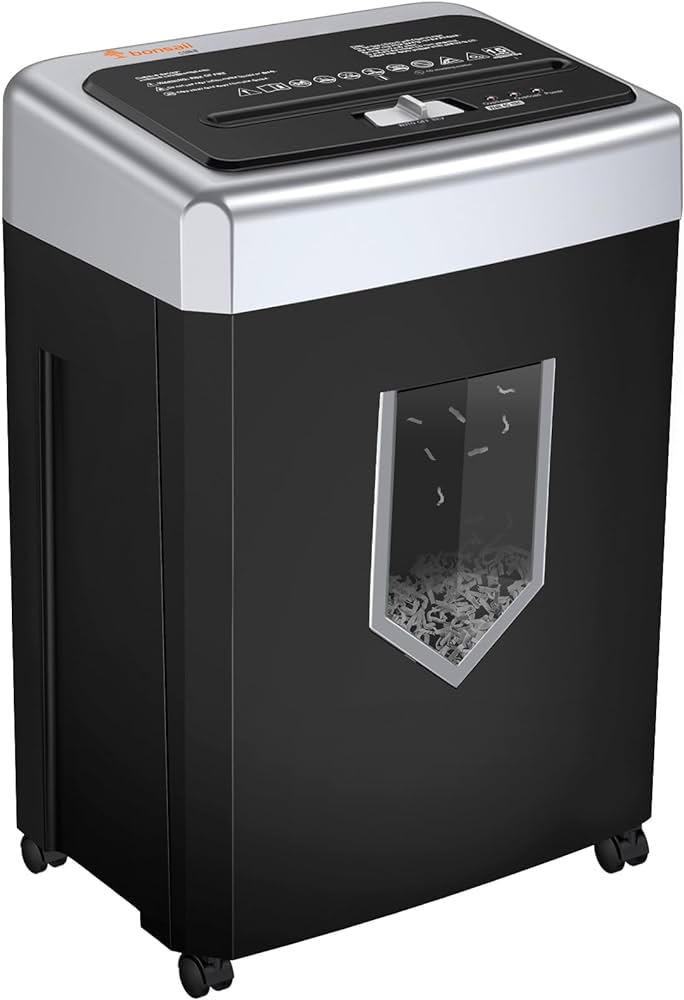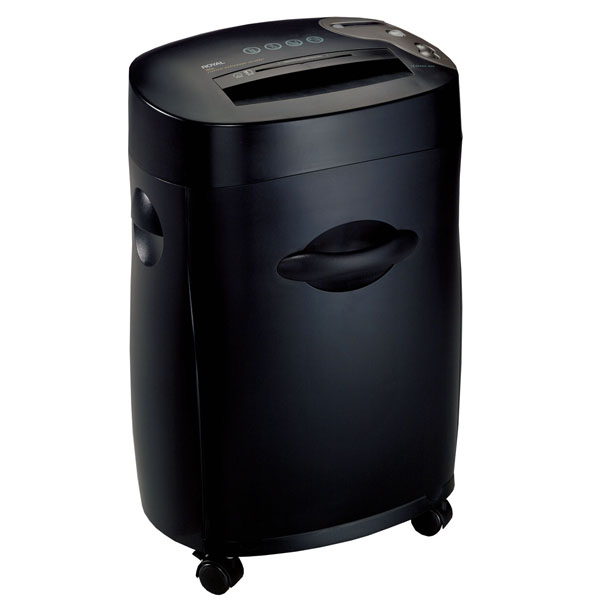The cross-cut paper shredder stands as a stalwart guardian of sensitive information. And offering a formidable defense against data breaches and unauthorized access. As technology continues to advance, the need for robust document security has never been more critical. In this comprehensive exploration, we delve into the multifaceted realm of cross-cut paper shredders. And examining their evolution, mechanics, significance in data protection, factors for consideration, environmental impact, and future prospects. Join us on a journey through the world of shredders, where security meets innovation and sustainability.
Origins and Evolution of the cross-cut paper shredder
The origins and evolution of the paper shredder trace back to the early innovations in secure document disposal and reflect a fascinating journey of technological advancement and enhanced data security practices. Here is an overview of the origins and evolution of the cross-cut paper shredder:
Origins:
19th Century Invention:
The concept of shredding documents dates back to the 19th century when various manual devices were used to destroy sensitive information. These early shredders were operated by hand and involved tearing or cutting paper into smaller pieces.
First Commercial Shredders:
The first commercially successful paper shredder was invented by Adolf Ehinger in 1935 in Germany. Ehinger’s invention stemmed from his desire to securely dispose of anti-Nazi propaganda, leading to the creation of a hand-cranked shredder.
Evolution:
Introduction of Cross-Cut Shredders:
The evolution of cross-cut paper shredders began with the introduction of cross-cut shredding technology, which involved cutting paper both horizontally and vertically to produce confetti-like particles. This method offered higher security compared to traditional strip-cut shredders.
Advancements in Technology:
Over the years, advancements in engineering and materials led to the development of more efficient and powerful cross-cut shredders. Innovations such as improved cutting mechanisms, motorized operation, and enhanced safety features contributed to the evolution of shredder technology.
Increased Security Demands:
With the rise of identity theft, corporate espionage, and data breaches, the demand for higher levels of document security grew. Cross-cut shredders became essential tools for individuals, businesses, and government agencies seeking to protect sensitive information from unauthorized access.
Regulatory Compliance Requirements:
The evolution of data privacy regulations and compliance standards, such as the Health Insurance Portability and Accountability Act (HIPAA) and the General Data Protection Regulation (GDPR), further propelled the adoption of cross-cut shredders as a means to ensure compliance and mitigate data security risks.
Integration of Digital Features:
Modern cross-cut shredders have evolved to incorporate digital features such as automatic shredding modes, jam protection sensors, and remote monitoring capabilities. These enhancements have enhanced user convenience and operational efficiency.
Sustainability Initiatives:
In recent years, there has been a growing emphasis on sustainability in shredder design and manufacturing. Many manufacturers now focus on producing energy-efficient shredders, using recycled materials, and promoting responsible disposal and recycling of shredded paper.
Future Prospects:
The evolution of cross-cut paper shredders continues, with ongoing research and development aimed at enhancing security levels, improving user experience, and integrating shredding technology with digital systems for seamless data management.
In summary, the origins and evolution of the cross-cut paper shredder reflect a progression from manual document destruction methods to sophisticated, high-security shredding solutions. As data security remains a paramount concern in today’s digital age, cross-cut shredders play a vital role in safeguarding sensitive information and upholding privacy standards.
Mechanics Unveiled
At the core of every cross-cut paper shredder lies a precision-engineered cutting mechanism that meticulously slices paper documents into tiny, confounding fragments. Unlike its strip-cut counterpart, the cross-cut shredder operates with heightened efficacy, producing smaller cross-cut particles that are significantly more challenging to reassemble. By unraveling the intricacies of the cross-cut shredding process, users gain insight into the formidable security measures employed to safeguard confidential information from prying eyes and malicious intent.
Data Security Imperative
In an era fraught with digital vulnerabilities and privacy concerns, the significance of data security cannot be overstated. The cross-cut paper shredder stands as a stalwart defender of sensitive data, providing a physical barrier against unauthorized access and ensuring the secure disposal of confidential documents. With the proliferation of personal and corporate information across various platforms, the risk of identity theft, fraud, and industrial espionage looms large. The cross-cut shredder emerges as a pivotal tool in fortifying the bulwarks of data security, preserving the integrity of sensitive information in an increasingly interconnected world.
Factors for Consideration
Selecting the right cross-cut paper shredder entails a careful evaluation of several critical factors to ensure optimal security and efficiency. Factors such as shredding capacity, security level, shredding speed, maintenance requirements, additional features, and brand reputation all play a pivotal role in determining the suitability of a cross-cut shredder for specific security needs. By meticulously considering these factors, users can make informed decisions when choosing a cross-cut shredder that aligns with their data protection imperatives.
Empowering Data Security
The deployment of cross-cut paper shredders in both residential and commercial settings empowers individuals and organizations to fortify their data security measures effectively. Whether it’s safeguarding personal financial records or protecting proprietary business information, the cross-cut shredder stands as an indomitable sentinel. And upholding the sanctity of confidential data and mitigating the risks of unauthorized disclosure. By integrating cross-cut shredders into their security protocols, users demonstrate a proactive commitment to data protection and regulatory compliance. And fostering a culture of vigilance in the face of evolving cybersecurity threats.
Environmental Impact and Sustainability
Beyond its role in data security, the cross-cut paper shredder contributes to environmental sustainability by promoting efficient paper waste management. Shredded paper material can be easily recycled, diminishing the demand for new paper production and reducing the environmental footprint associated with paper disposal. By leveraging cross-cut shredders to securely destroy documents and recycle resulting paper waste, users advocate for eco-friendly practices. And aligning data security efforts with environmental conservation objectives.
Innovative Advancements and Future Prospects
As technological innovation continues to redefine the landscape of data security, the future of cross-cut paper shredders holds promise for groundbreaking advancements. Concepts such as smart connectivity features, automated shredding processes, enhanced security protocols. And integration with digital systems are poised to revolutionize the domain of secure document destruction. By embracing innovation and harnessing cutting-edge technologies, the next generation of cross-cut shredders will deliver advanced solutions for protecting sensitive information in an interconnected world characterized by evolving cybersecurity challenges.
Empowering Security through Cross-Cut Shredders
Empowering security through cross-cut shredders involves recognizing their pivotal role in protecting sensitive information and upholding data security standards. By leveraging cross-cut shredders, individuals and organizations can fortify their defenses against unauthorized access and data breaches. This empowerment encompasses several key aspects:
Data Protection:
Cross-cut shredders provide a robust defense mechanism for safeguarding confidential information. By securely disposing of sensitive documents, these shredders prevent unauthorized access and mitigate the risk of identity theft, fraud, and industrial espionage.
Regulatory Compliance:
Utilizing cross-cut shredders enables adherence to data protection regulations and privacy laws. Organizations can demonstrate proactive commitment to compliance by implementing secure document destruction practices, thereby avoiding potential legal and financial repercussions associated with data mishandling.
Environmental Responsibility:
Cross-cut shredders support environmental sustainability by facilitating efficient paper waste management. Shredded paper material can be recycled. And reducing the environmental impact of paper disposal and promoting eco-friendly practices in line with corporate social responsibility objectives.
Empowerment Through Awareness:
By raising awareness about the importance of secure document disposal and the role of cross-cut shredders in data security, individuals. And businesses can empower themselves to take proactive measures in preserving the confidentiality of sensitive information.
Innovation and Adaptation:
Embracing innovative advancements in cross-cut shredder technology empowers users to stay ahead of evolving cybersecurity threats. Features such as smart connectivity, enhanced security protocols. And automated shredding processes enable users to adapt to changing security requirements and maintain a proactive stance against emerging risks.
In essence, empowering security through cross-cut shredders involves integrating these devices into comprehensive data protection strategies. And fostering a culture of vigilance, and embracing technological advancements to uphold the integrity and confidentiality of sensitive information. By doing so, individuals and organizations can fortify their defenses, promote responsible data management. And contribute to a more secure and privacy-conscious environment.





